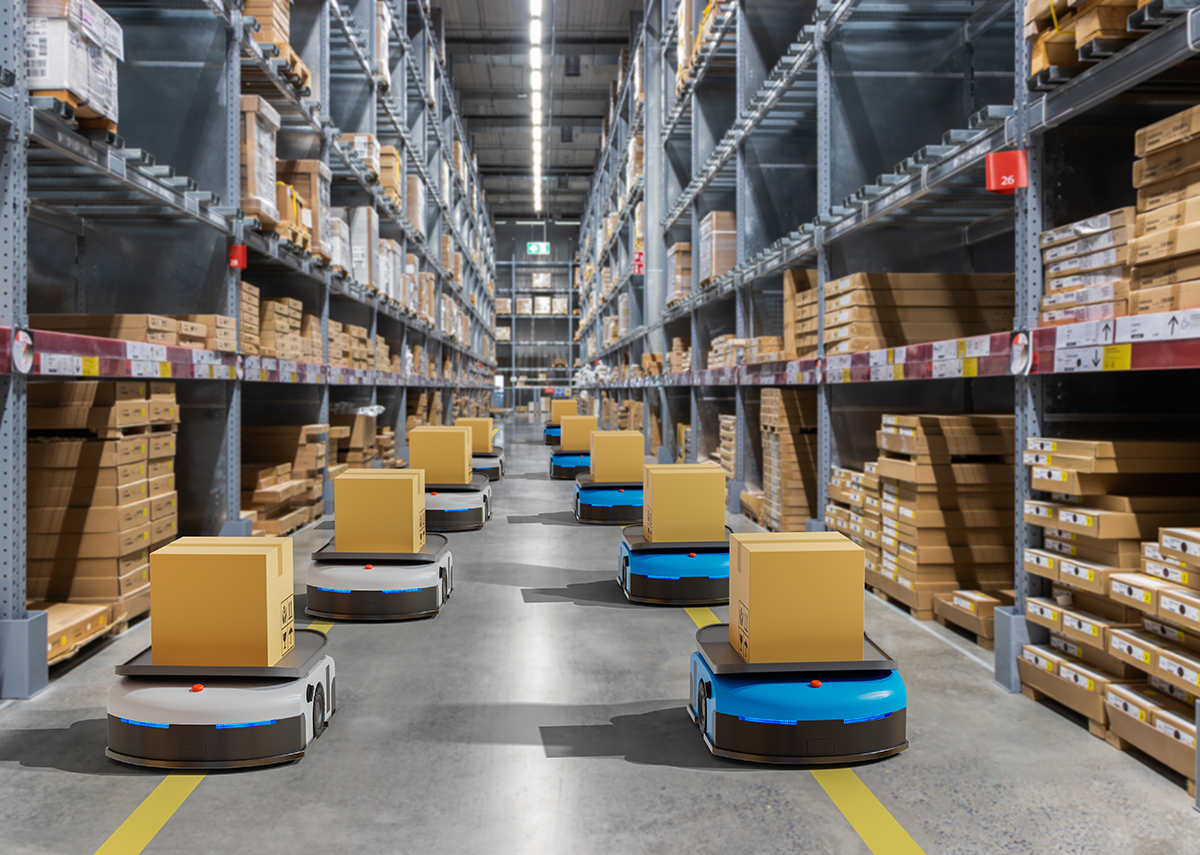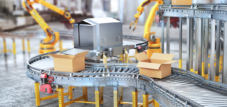The megatrends of digitalization, automation, and networking are shaping the processes of our daily lives. At the same time, they are a key factor in the economic strength of leading industrialized nations, which are constantly driving technological advancements through continuous innovation. Increasingly precise hardware and software that is becoming more powerful year after year enable system solutions that are taking over the work of human specialists in more and more areas. Logistics is also affected by this, and the question arises whether we are on the cusp of an era of warehouses without people.
For many people, robots have become an indispensable part of everyday life. The use of industrial robots in manufacturing has long been standard practice. Logistics, however, has lagged behind in this area. This is primarily because robots are more or less blind and deaf. They don't lack strength, but rather the senses of humans. And to function smoothly in warehouses, future generations of robots will need to master precisely these senses.
Gripping heterogeneous objects remains a particular challenge. Nevertheless, robots are being used more and more frequently in warehouses. According to a survey by Jones Lang LaSalle of 200 European logistics experts, approximately 50 percent stated that they already use automation technologies in their warehouses. Of these, 55 percent already use robots.
Robots are changing logistics
And the market continues to evolve. This is due in no small part to the strong growth of the logistics sector and the resulting labor shortage. The superior performance of automated processes in terms of precision, speed, and operating time is another reason for the trend toward robotics.
There's no doubt that the fully automated warehouse with automatic delivery by drone or robot right to the customer's doorstep is still a long way off. However, the beginnings of this development are already visible . The internet giant Amazon the way with the integration of the Kiva robot into its warehouse logistics. Kiva automatically transports goods to the picking stations, saving staff time and effort. Currently, over 13,000 of these agile units are said to be operating in Amazon's fulfillment centers.
Picking robots are taking over the job of warehouse workers.
Besides Amazon's Kiva system, there are a number of other developments that are continuously expanding the application of robots in intralogistics. A picking combination of two robots comes from the US company Fetch Robotics . The duo completes its tasks independently and navigates autonomously through the warehouse on its wheels. At the shelf, the Fetch model uses its extendable gripper arm to retrieve the ordered item. Its partner, Freight, is equipped with a basket into which the goods are placed. Once the basket is full or the order is complete, it transports the goods to the picking station. Here, the warehouse worker waits – for now – to process the goods further.
The Munich-based company Magazino is pursuing a more advanced approach with its Toru transport robot . Similar to Fetch, Toru navigates autonomously through the aisles and works through pick lists to bring the goods to the picking station once the order is complete. There, another Magazino robot comes into play. This robot uses a scanner and camera to receive the delivered goods, identify them, and prepare them for shipping or the next production stage. The combined use of both devices makes it possible to manage a conventional shelving warehouse entirely without human intervention. But the use of these electronic assistants isn't limited to this type of warehouse: automated storage and retrieval systems can also benefit from the picking station. In these systems, the robot can be integrated at the picking opening in place of the usual packing station – precisely where the warehouse worker would normally stand.
Instead of relying solely on robots, the Baxter, a robotic solution from Rethink Solutions, is based on safe human-machine collaboration. Unlike conventional industrial robots, the Baxter belongs to a generation of cooperative robots that interact closely with humans. Using its sensors and camera technology, it constantly scans its surroundings and slows down when people are nearby. It also uses its camera eyes to identify and grasp objects.
A middle ground in human-machine collaboration
All these approaches demonstrate the extent to which human labor can already be replaced. However, these solutions are usually associated with significant investments in warehouse technology. This is one of the reasons why logistics companies are increasingly relying on systems that promote the parallel use of humans and robots. It doesn't necessarily always have to be robotic systems that support humans. There is now a wide range of remote solutions available that allow warehouse processes to be managed regardless of location. For example, the use of mobile handheld devices to manage these processes is now widespread. Another example is the use of drones to monitor inventory . These agile aircraft can be controlled by an employee at their workstation, eliminating the long distances that would otherwise be required for a physical inventory. Along with driverless transport systems, these technologies also ensure that fewer and fewer employees need to enter a warehouse.
An additional boost to innovation could come from the increasing prevalence of virtual developments: Many warehouse tasks, such as controlling transport vehicles or the aforementioned warehouse drones, can be optimized using virtual reality solutions. By wearing VR glasses, employees have their hands free for additional tasks and, moreover, receive all relevant information directly on the glasses' display. Since the approach is still relatively new and individual requirements vary considerably, it is advisable to consult a specialist familiar with the topic before implementing VR , as they can provide companies with valuable support.
CONCLUSION
Experts believe that the increasing use of robots in intralogistics will dramatically boost productivity. Furthermore, it will influence the location strategies of logistics companies, as labor costs will become significantly less important. It seems, therefore, that the question is no longer "if?" but simply "when?" before robotics becomes widespread in logistics.


